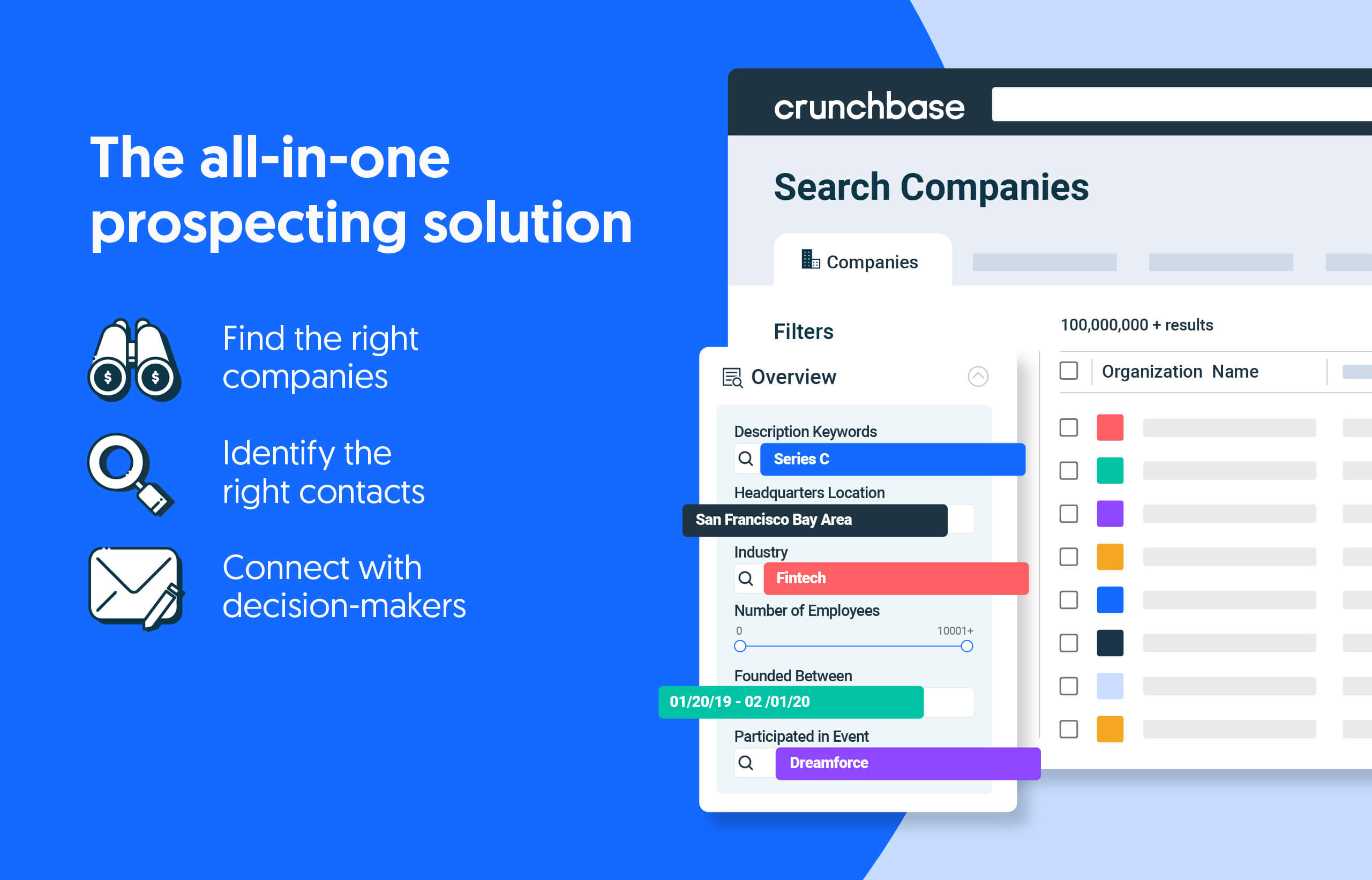Venture firms have continued to raise record funds in 2022, even as startups received far less money than they did last year. That poses the question: What will happen with all that dry powder in 2023?
Dry powder is as high as $1.3 trillion globally for private equity and $580 billion globally for VC, according to one estimate from James Ephrati of Lightspeed Venture Partners. The dry powder in 2021 was roughly the same, he said, but investors were putting money to work at a record pace.
Investors are likely to hold back in 2023, at least in the shorter term, as funding valuations trend down. Founders are becoming more disciplined around spending, which will impact growth. And limited partners who overextended in venture capital assets would prefer firms to come back to raise subsequent funds with wider time horizons.
Search less. Close more.
Grow your revenue with all-in-one prospecting solutions powered by the leader in private-company data.
All of these new conditions will make for a much more cautious funding environment next year.
While fundraising by venture investors increased in 2022, funding to startups slowed significantly. In the third quarter of 2022, global venture funding dropped by more than 50% year over year, per a Crunchbase News analysis. Late-stage funding has plummeted even more dramatically by 63% year over year.
The LP perspective
Limited partners who invest in venture funds are expected to slow down commitments in coming years.
“While I have not heard of many LPs looking to get out of the venture asset class, I do generally expect to see increased LP churn in 2023 and potentially into 2024,” Elizabeth Clarkson, a partner at Sapphire Ventures, which runs its allocation to venture funds in the U.S. and globally, said in written responses.
“If history is any guide looking back from the 2000 dot-com bubble bursting and the Great Recession of 2009, I think we will see a reduction in 2023 in the total number of venture funds raised, and possibly into 2024,” she said.
Fund managers should expect a tougher fundraising climate, Clarkson said. “I don’t believe this means emerging venture managers won’t get funded, but I do think the bar has been raised for all venture managers on what constitutes true underlying performance versus high paper valuations.”
2021 multiples
Many of the high valuations set in 2021’s frothy market, particularly for late-stage startups, are starting to look unsustainable, according to industry watchers.
This is “reflected very much in private markets, where there’s tremendous uncertainty around the forward path of pricing,” according to Ben Savage, a partner at Clocktower Technology Ventures. “In the middle and later stages it’s been a much more difficult year to find compelling opportunities.”
Fewer companies are seeking funding at late stage either because they have raised large fundings in recent years that can tide them over or because they are cost-cutting or seeking other types of capital, as venture capital is not flowing as freely as it did in 2021.
As investors turn away from late-stage financings due to pressure on valuations, companies that need to raise funding face a dilemma. Those not able to grow into prior valuations will be forced to reset. For example, in July Klarna slashed its valuation from $45.5 billion to $6.7 billion to better position itself should it plan to go public in the next year or two. Meanwhile, Instacart, cut its internal employee share price in October, resulting in an internal valuation cut from $39 billion to $24 billion. And in September, SoftBank cut its valuation in travel tech startup OYO from $9.6 billion to $2.7 billion.
Sitting on funds
With record funds raised, how will the venture markets look in 2023 and beyond?
“While there is still pressure to invest, it depends on fund size/length, relationship with LPs, and market volatility,” Lightspeed’s Ephrati, who manages the firm’s follow-on investment practice, wrote in an emailed response. “If a fund size is large ($1 billion-plus) with a 10-plus-year lifespan, investors can make the argument that markets are too volatile, private and public valuations have yet to converge, and there will be better buying opportunities in 2024.”
He anticipates that VC financings will pick up in the second half of 2023.
“A ton of great companies will raise in Q3/Q4 2023 because they’re (a) running out of cash or (b) would like to take advantage of friendlier private market conditions,” he said. “Those companies will also have grown into their 2021 valuation — meaning, the gap and price distortion between a private company’s last round valuation and where public market comparables are trading will be smaller.”
Tech rout
Companies last year were advised to grow at all costs. Investors rewarded them with funding and high values, which in turn led to more than 1,400 private companies valued at $1 billion or more on The Crunchbase Unicorn Board. The majority of those, 1,192, have raised funding since the beginning of 2021. And over 900 of those joined the board since the beginning of 2021.
In 2022 the message became to cut costs and extend runway.
What happens in 2023 is still unclear. Will those same companies that come through to the other side and ready to raise funding meet a venture market willing to fund them?

Stay up to date with recent funding rounds, acquisitions, and more with the Crunchbase Daily.







![Illustration of a guy watering plants with a blocked hose - Global [Dom Guzman]](https://news.crunchbase.com/wp-content/uploads/quarterly-global-3-300x168.jpg)
67.1K Followers